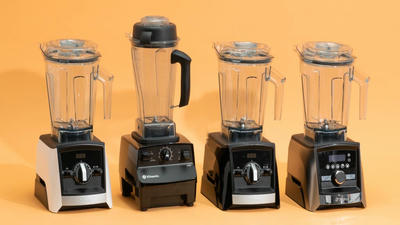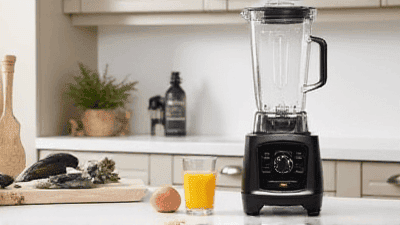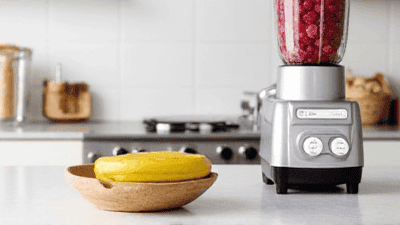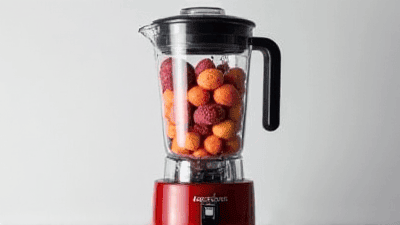
In today's fast-paced world, a blender is more than just a kitchen appliance; it’s a gateway to quick and healthy meals. Whether you are making smoothies, soups, sauces, or nut butters, picking the right blender can enhance your cooking experience and contribute to a healthier lifestyle. With myriad options available on the market, choosing the perfect blender can feel overwhelming.
A good blender opens the door to various cooking techniques and recipes. From smoothies to soups, dips, and dressings, a quality blender can tackle multiple kitchen tasks, making it a versatile tool for any chef, whether novice or experienced.
Investing in a reliable blender saves time in food preparation. Instead of manual chopping and mixing, a blender allows for quick and efficient processing, enabling you to whip up meals in minutes.
Blending fruits and vegetables preserves their nutrients and makes it easier for your body to absorb them. Smoothies packed with greens, protein, and healthy fats can be a convenient meal option that supports your overall health.

Before diving into specific features, it’s essential to understand the different types of blenders available. Each type has its unique strengths and fits various cooking needs.
Countertop blenders are the most common type, suitable for various tasks. They typically feature larger bowls, multiple speed settings, and powerful motors.
Best for:
Considerations: Look for models with a robust motor (at least 500 watts) for effective blending.
Also known as stick blenders or hand blenders, immersion blenders are handheld devices that allow for blending in pots, bowls, or cups. They are typically lightweight and easy to handle.
Best for:
Considerations: They are generally less powerful than countertop blenders, so they may not handle tough ingredients as effectively.
Personal blenders are compact and designed for making single-serving smoothies or shakes. They typically come with portable cups that can double as travel mugs.
Best for:
Considerations: While they are convenient, personal blenders may not have the power to handle tougher ingredients like ice or fibrous vegetables.
High-performance blenders are commercial-grade machines designed for heavy use and advanced blending tasks. They typically boast impressive motor strength, variable speed settings, and advanced blending technology.
Best for:
Considerations: They tend to be more expensive than standard blenders, but their durability and performance justify the investment.
These multifunctional appliances combine blending and food processing capabilities, allowing you to chop, slice, and puree with one machine.
Best for:
Considerations: While they offer versatility, they can be bulkier and more challenging to clean than standalone blenders.
Choosing the right blender is about understanding which features matter most to your cooking style and needs. Consider the following features:
The motor is the heart of a blender, and its power can significantly influence its performance. Motor power is measured in watts. Here’s a general guide:
The design and material quality of the blades affect blending efficiency. Stainless steel blades are common for their durability and ability to maintain sharpness over time. Some blenders feature specially designed blades for specific tasks, like ice crushing or shallow blending.
The material of the blending jar can impact durability, weight, and ease of cleaning. Common materials include:
Consider your typical blending needs. Countertop blenders come in various sizes, generally ranging from 32 ounces to 64 ounces:
Having multiple speed settings gives you control over the blending process. Look for blenders with variable speed options, allowing for different textures and levels of blending, as well as a pulse setting for added control during chopping or grinding.
Consider how easy it is to clean the blender. Many modern blenders offer dishwasher-safe components or self-cleaning functions. Designs that allow easy access to blades and jar interiors make post-blending cleanup far more efficient.
Some blenders can be quite loud, which may be a concern if you plan to use them in the morning or late at night. Reading consumer reviews can give you an idea of the noise level of specific models.
Some blenders come with additional accessories, such as travel cups, tamper sticks, or recipe books. These can add value and convenience, so consider whether these extras would benefit your cooking style.

Before making a purchase, take a moment to consider your cooking needs. Do you primarily make smoothies, soups, sauces, or nut butters? Understanding your primary use will help narrow down your options.
Blenders can vary significantly in price, from budget-friendly models to high-end, professional-grade machines. Set a budget while considering how often and intensively you plan to use your blender. Investing in a quality blender can be worthwhile if you plan to use it regularly.
Online reviews can provide valuable insights into product performance, durability, and user satisfaction. Look for reviews from cooking enthusiasts and professionals to gauge how well each blender performs in real-world scenarios.
If possible, visit a store to hold and test different blenders. Pay attention to how comfortable the grip is, how it feels when in use, and the overall weight and balance.
When purchasing a blender, check for warranty coverage and customer support. A good warranty can provide peace of mind in case of issues over time.
Proper maintenance of your blender is essential for ensuring its longevity and optimal performance. Here are practical tips for caring for your blender:
To prevent food from drying and hardening on your blender blades, clean it immediately after each use. Rinse the jar and blades, and wash them with warm soapy water or run them through a dishwasher if the components are dishwasher-safe.
For tough stains or stuck-on residues, fill the jar with warm water, add a few drops of dish soap, and run the blender on low for a few seconds. Rinse thoroughly afterward.
If you have a lower-powered blender, avoid placing ice or hard ingredients in it, as this can strain the motor and lead to breakage. Opt for softer ingredients to extend the longevity of your blender.
Inspect the blades for dullness, chips, or damage. If necessary, replace them according to the manufacturer’s recommendations to maintain performance.
When not in use, store your blender in a cool, dry place. If it has a detachable jar, keep it on the base, and if it doesn't, store it separately to prevent accidental damage.

Here’s a brief overview of some popular blender brands known for their performance and reliability:
Vitamix blenders are renowned for their durability, power, and versatility. They come with multiple speed settings, robust motors, and blades that can handle tough ingredients. Vitamix blenders are often considered the gold standard in high-performance blenders.
Ninja offers a wide range of blenders known for their power and affordability. Many models feature multiple options and accessories, making them versatile for different cooking tasks. They often come with a stylish design and solid performance.
Blendtec blenders are known for their smart blending technology, which automatically adjusts the settings based on the contents of the jar. They offer powerful motors and sleek designs, making them popular in both homes and commercial kitchens.
Breville blenders are recognized for their innovative features and elegant designs. They combine high performance with user-friendly interfaces, often including unique blending modes and presets.
Hamilton Beach offers budget-friendly blenders without sacrificing performance. They provide various options to cater to different needs, making them suitable for first-time buyers or less frequent users.
Choosing the right blender can greatly enhance your cooking experience and support healthier eating habits. By understanding the various types of blenders available, key features to consider, and maintenance practices, you empower yourself to make an informed decision.
Take the time to assess your cooking needs and preferences to find a blender that fits your lifestyle. With the right blend of power, versatility, and ease of use, a quality blender can become one of your most valuable tools in the kitchen. Whether you are whipping up smoothies, soups, or sauces, the right blender will enhance your culinary creativity and efficiency, making cooking an enjoyable and satisfying endeavor.